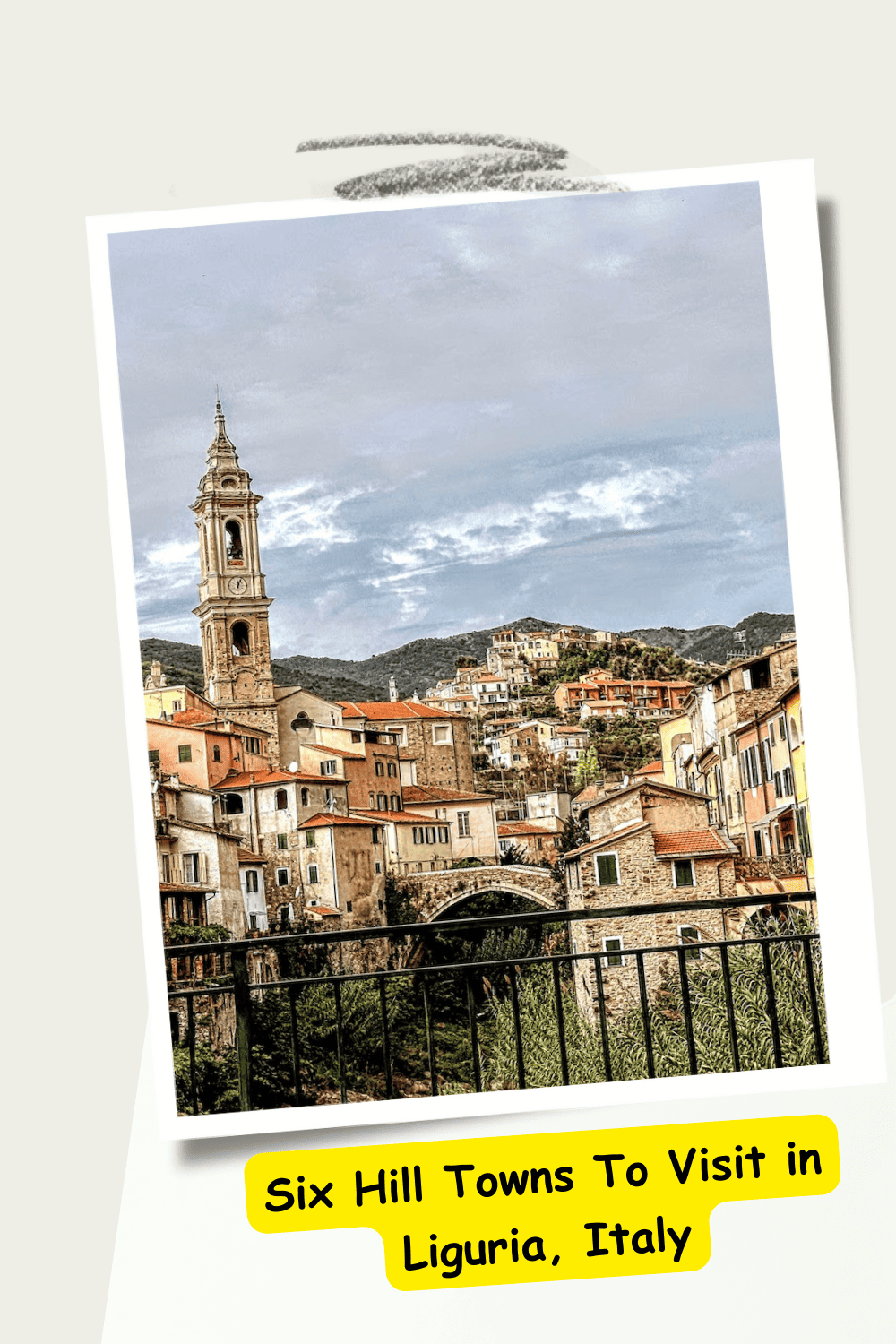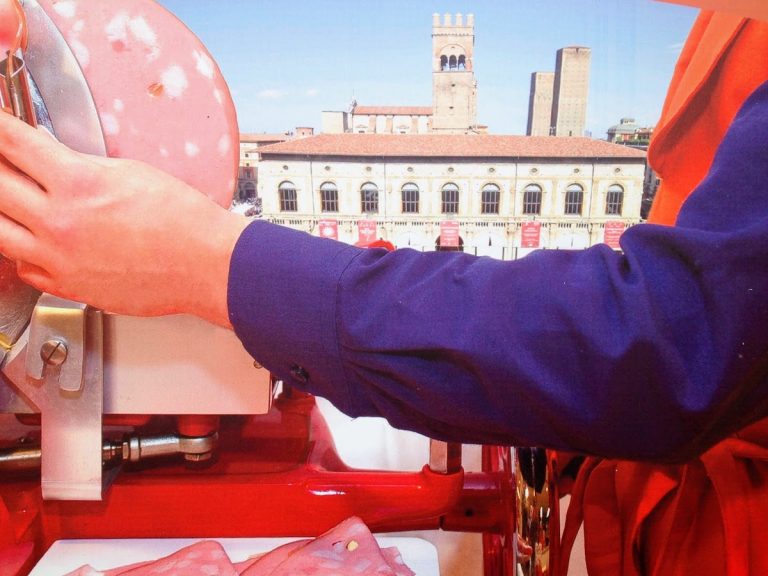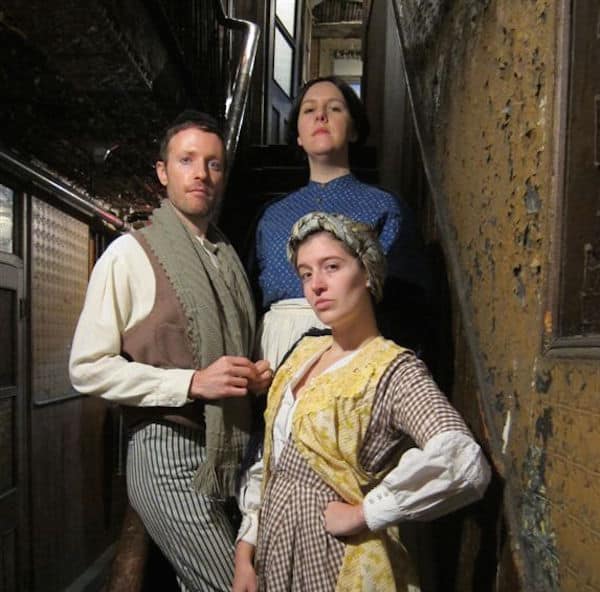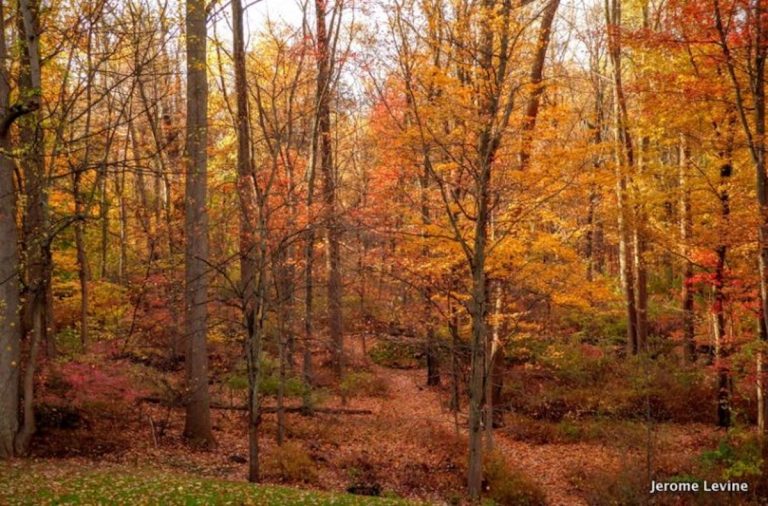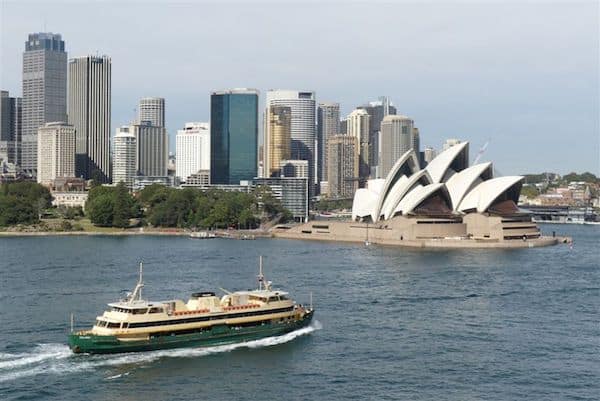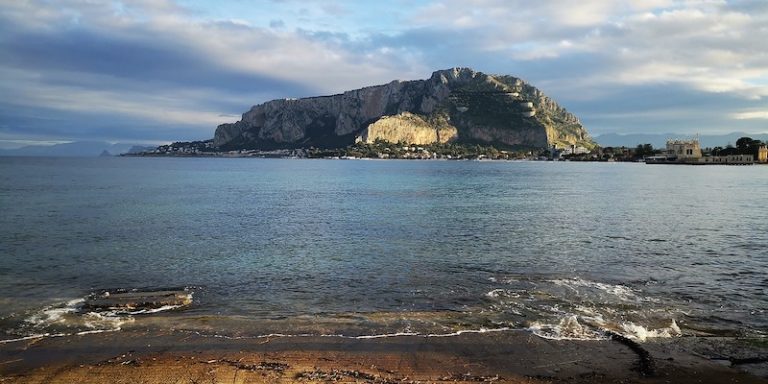The Italian Riviera: 6 Ligurian Hill Towns Worth Visiting
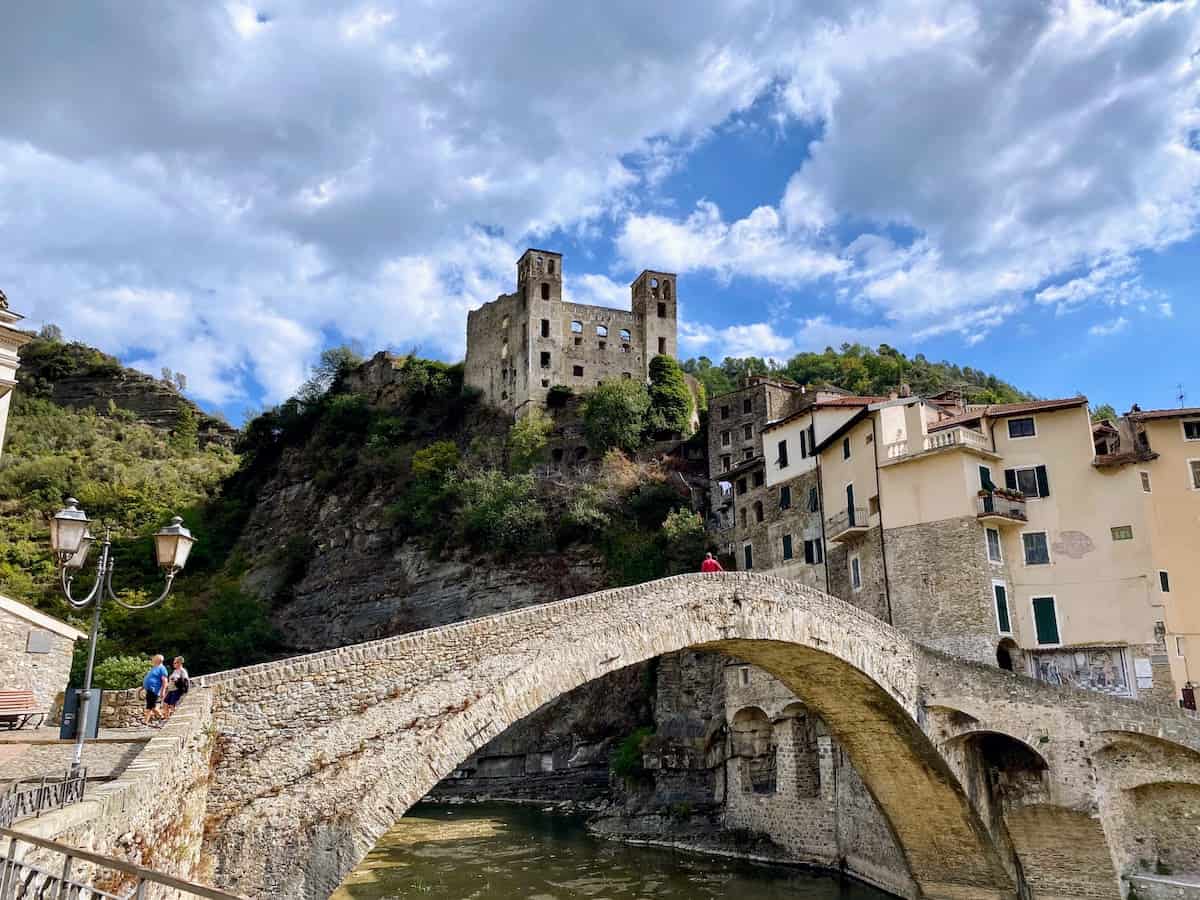
The Italian Riviera (Riviera Ligure) is the narrow strip of land (stretching more than 200 miles from southwest to northeast) between the Ligurian Sea and the mountain chain formed by the Maritime Alps and the Apennines.
This dramatic coastline—dotted with gardens, beach towns, fishing villages, marinas, and miles of walking and biking paths—is a favorite destination of Italians and foreign tourists.
Hidden treasures of the Riviera di Ponente
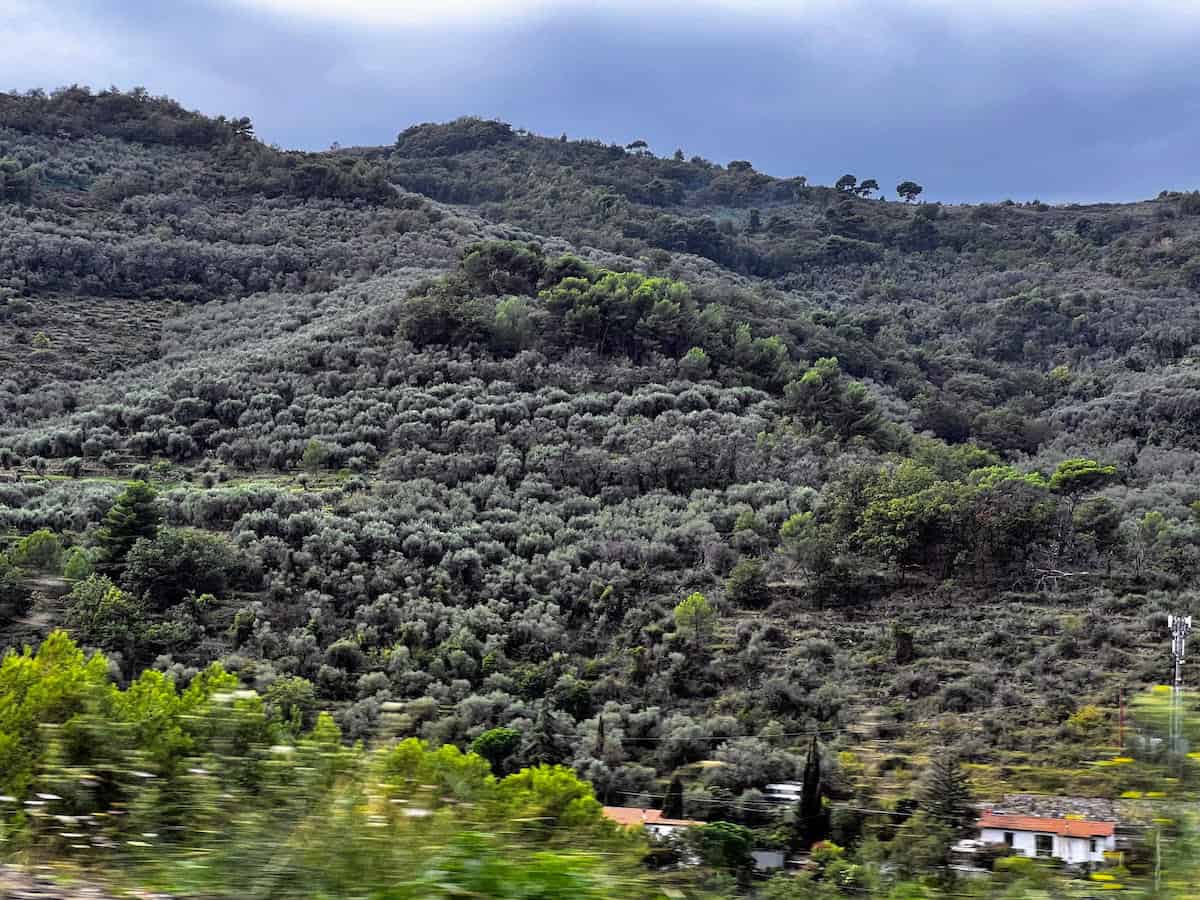
Most tourists visiting Liguria gravitate to the more popular eastern portion of the Italian Riviera, called the Riviera di Levante.
But the Ligurian hill towns above the coast on the western portion, the Riviera di Ponente, are truly worth visiting to immerse oneself in Ligurian history and culture. This area is also called the Riviera dei Fiori (flowers) because of its stunning flowers and historical importance as a center of the flower industry.
Many of its small Ligurian hill towns are designated I Borghi più belli d’Italia (the most beautiful villages in Italy).
The narrow, winding roads leading up the hills and mountains are dotted with glistening olive trees, terraced vineyards, and fragrant citrus trees. Views of the valleys below and the hill towns nestled above are spectacular from every vantage point.
6 Not-To-Be-Missed Ligurian Hill Towns
We were fortunate to tour the area with our friend, a native son of Liguria. The region has four provinces: Imperia, Savona, Genoa, and La Spezia.
Here are a few hill towns in the province of Imperia that shouldn’t be missed when visiting the Italian Riviera:
Dolcedo
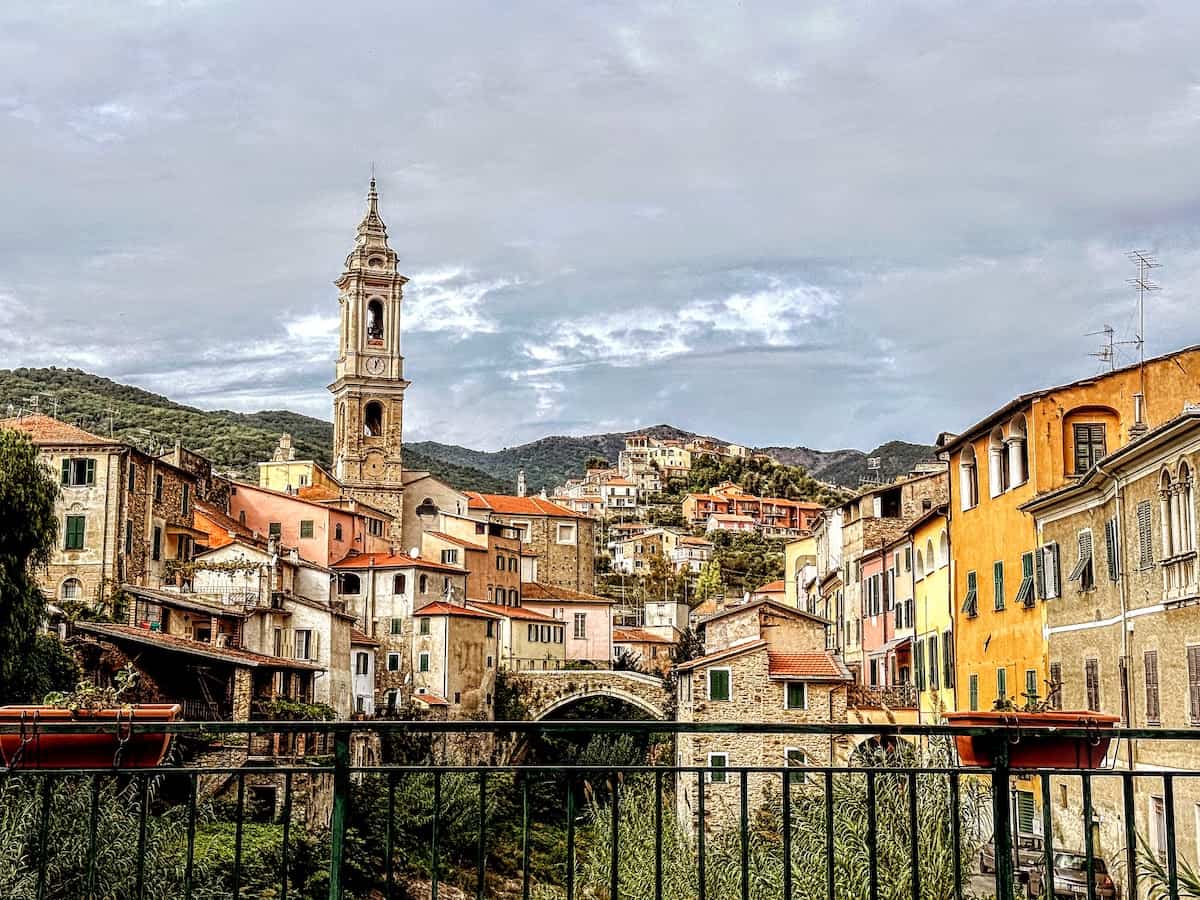
Dolcedo is one of the most scenic hill towns in the region.
The medieval town is known for its architecture and picturesque bridge over the now dried-up Prino River. It is a perfect destination for a relaxed walk to soak up years of history.
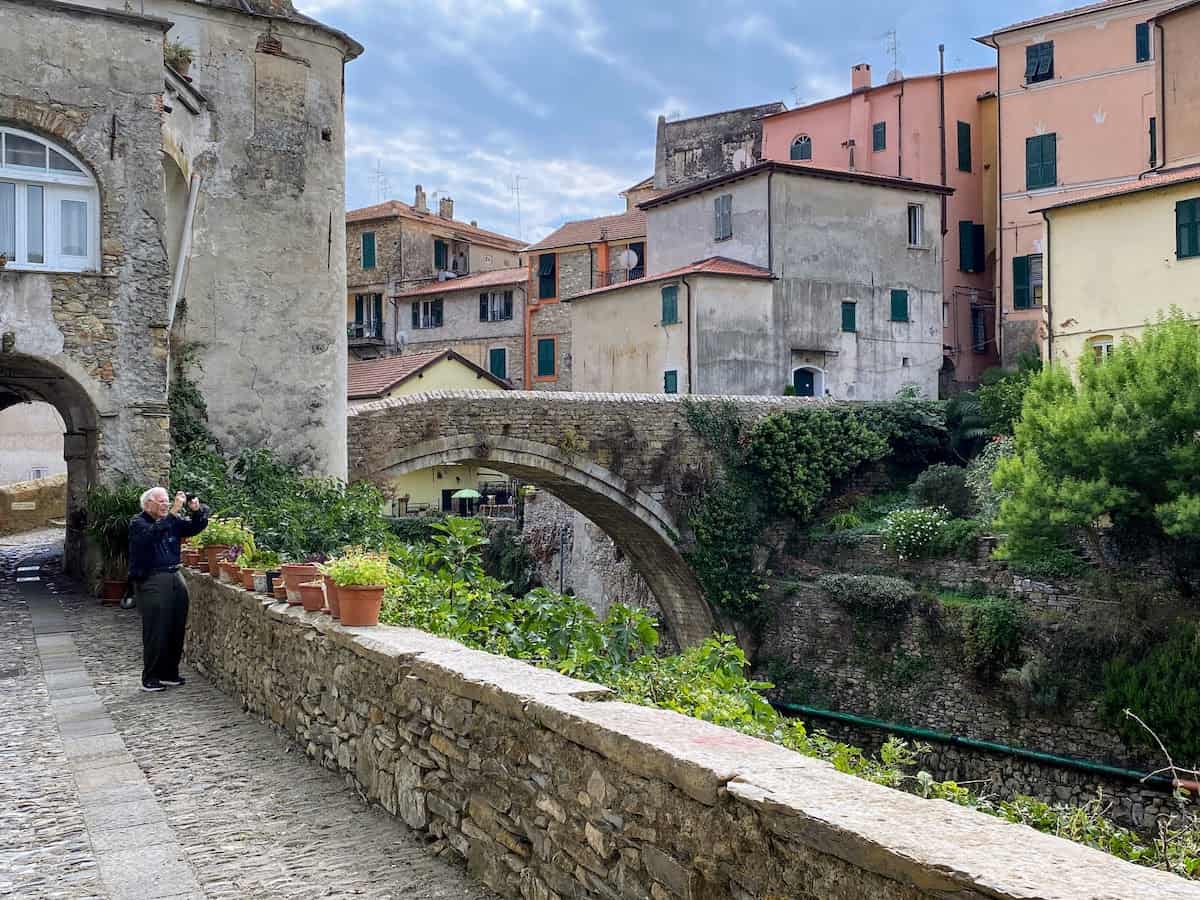
Be sure to stop in the town’s cultural hub, the Chiesa San Tomasso constructed during the second half of the 17th century.
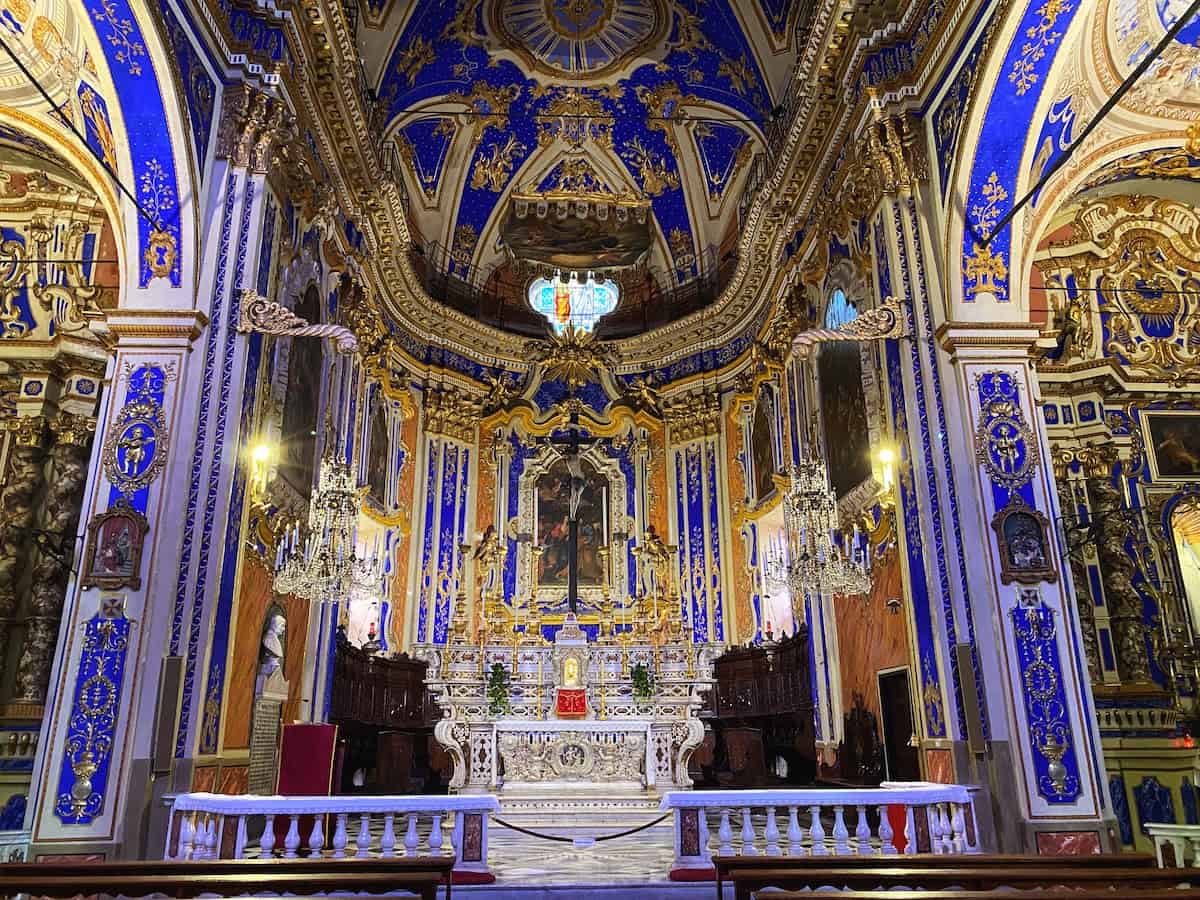
Seborga
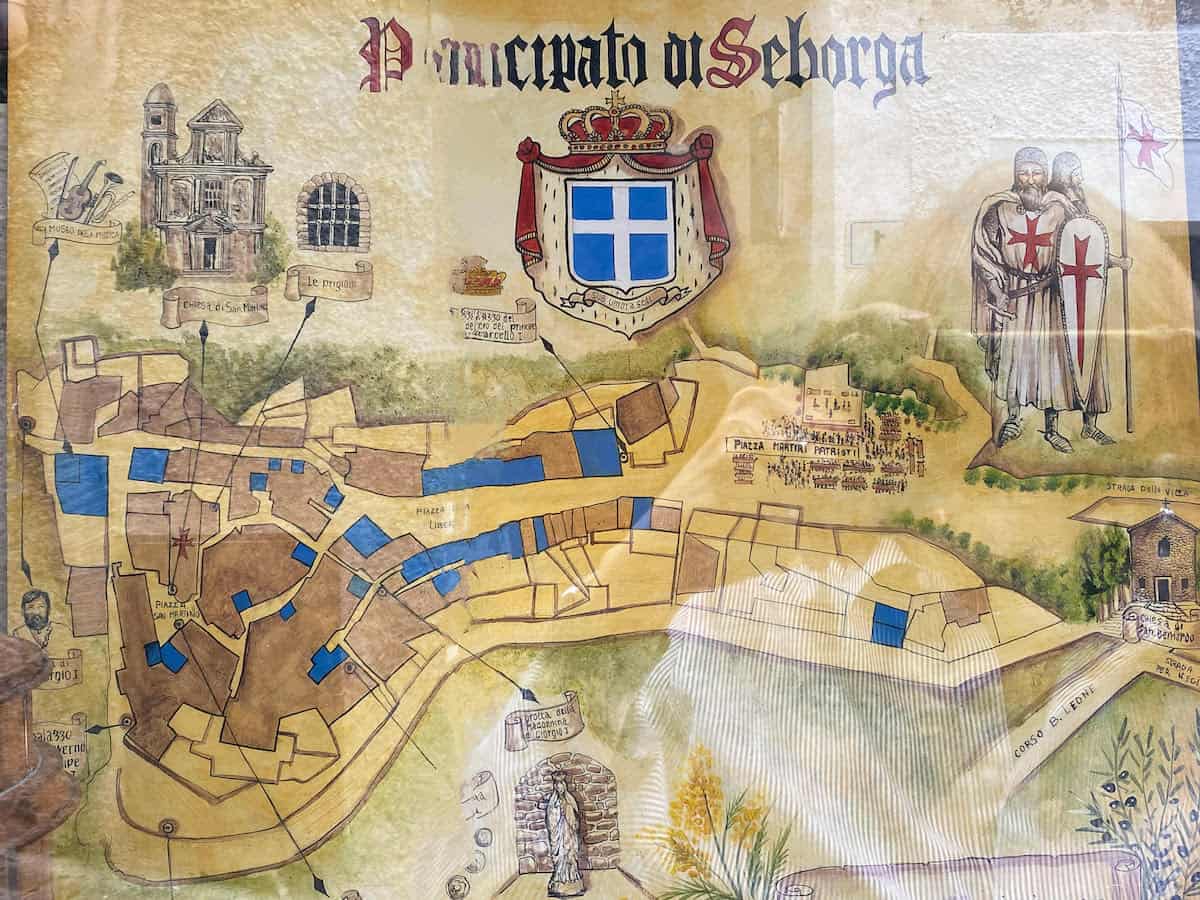
What is most fascinating about this quirky hill town near France’s border is its claim to independence. Seborga considers itself a micronation, although Italy doesn’t recognize its status as such.
The principality of Seborga, which has its own constitution, flag, and Principessa, has become a tourist mecca. Visitors can even buy a tourist visa at the quaint town museum.
As you walk the cobblestone streets, you’ll see historic buildings and expansive views of the surrounding countryside. Stop at a restaurant or trattoria to enjoy some of the local dishes shaped by the abundant mountain food products.
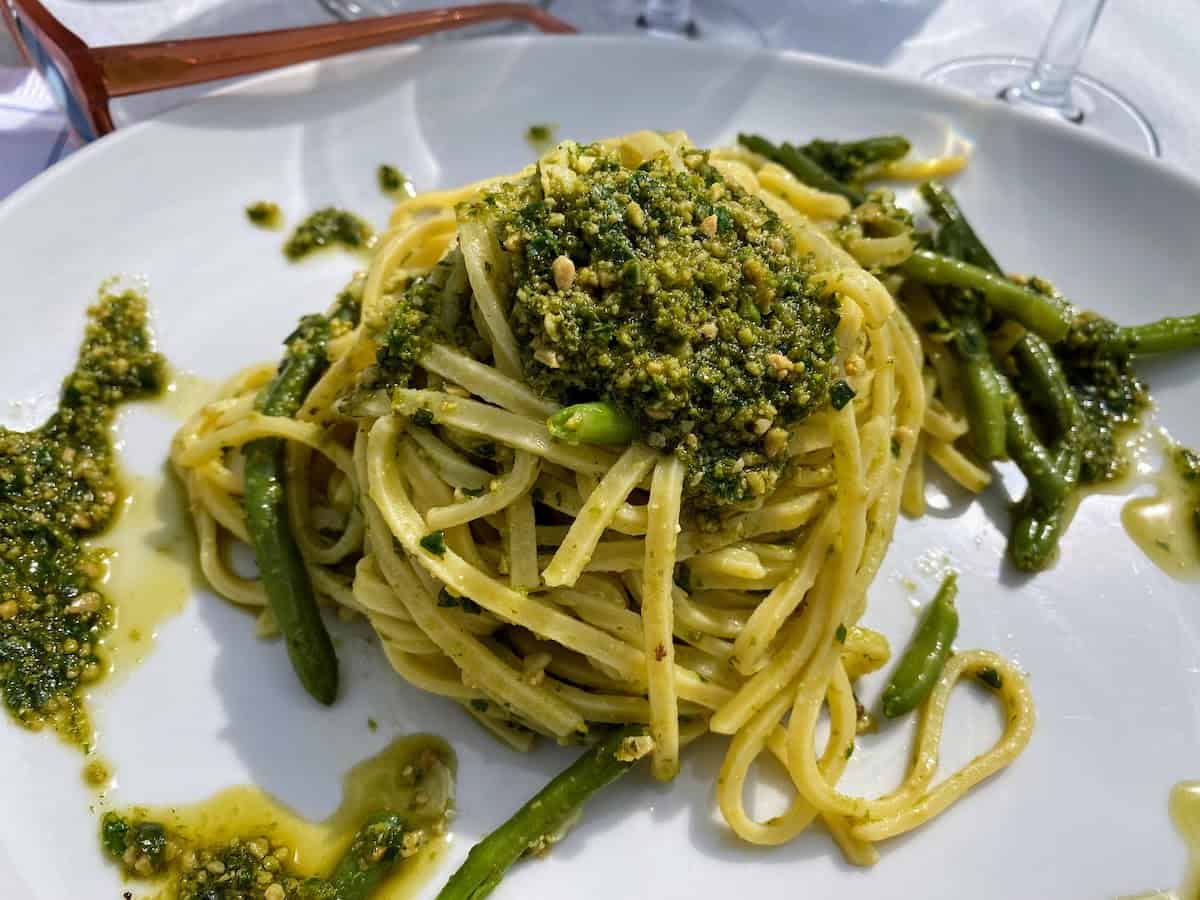
We found the story of Seborga to be reminiscent of the Netflix Rose Island film, the story of an iconoclastic engineer who builds an island off the coast of Italy and declares it a nation.
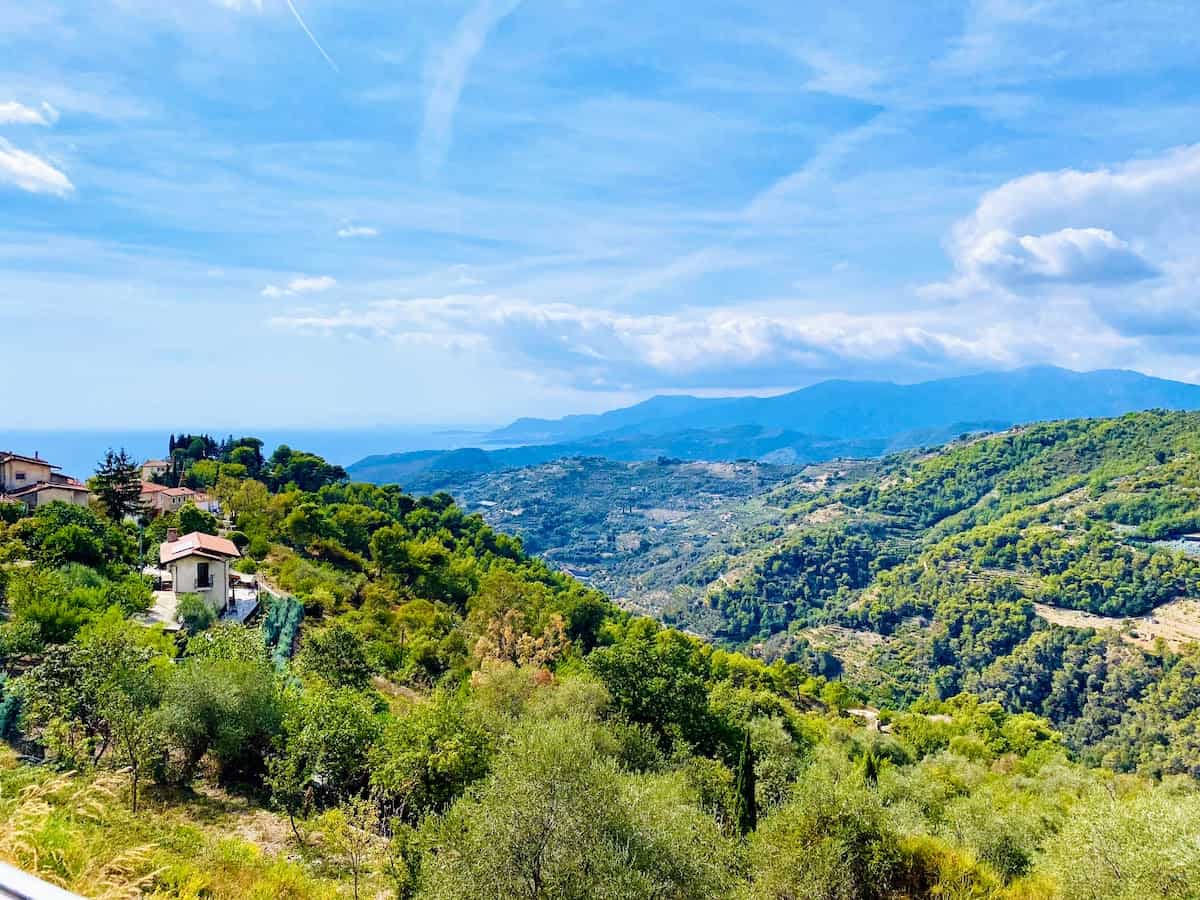
Triora
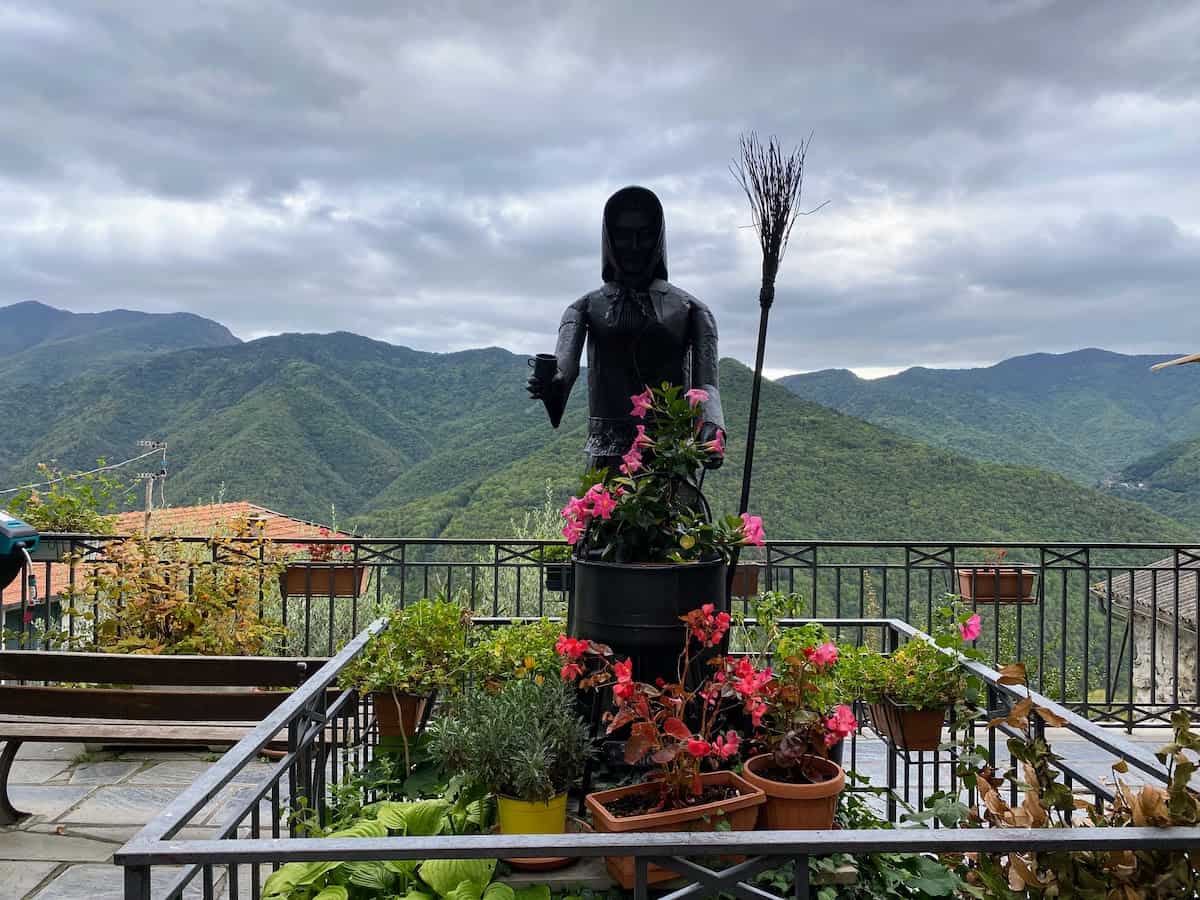
Triora is perched atop the Maritime Alps, also not far from the French border.
Known as the “Village of the Witches,” this medieval town is one of the sites where witch trials took place at the end of the 16th century. Women were accused of witchcraft and executed.

The town still has a dark, eerie feel as you walk through its narrow interior streets lined with structures and stone archways, some of them seemingly abandoned. But situated on a mountain, you can enjoy breathtaking views of the valleys below.
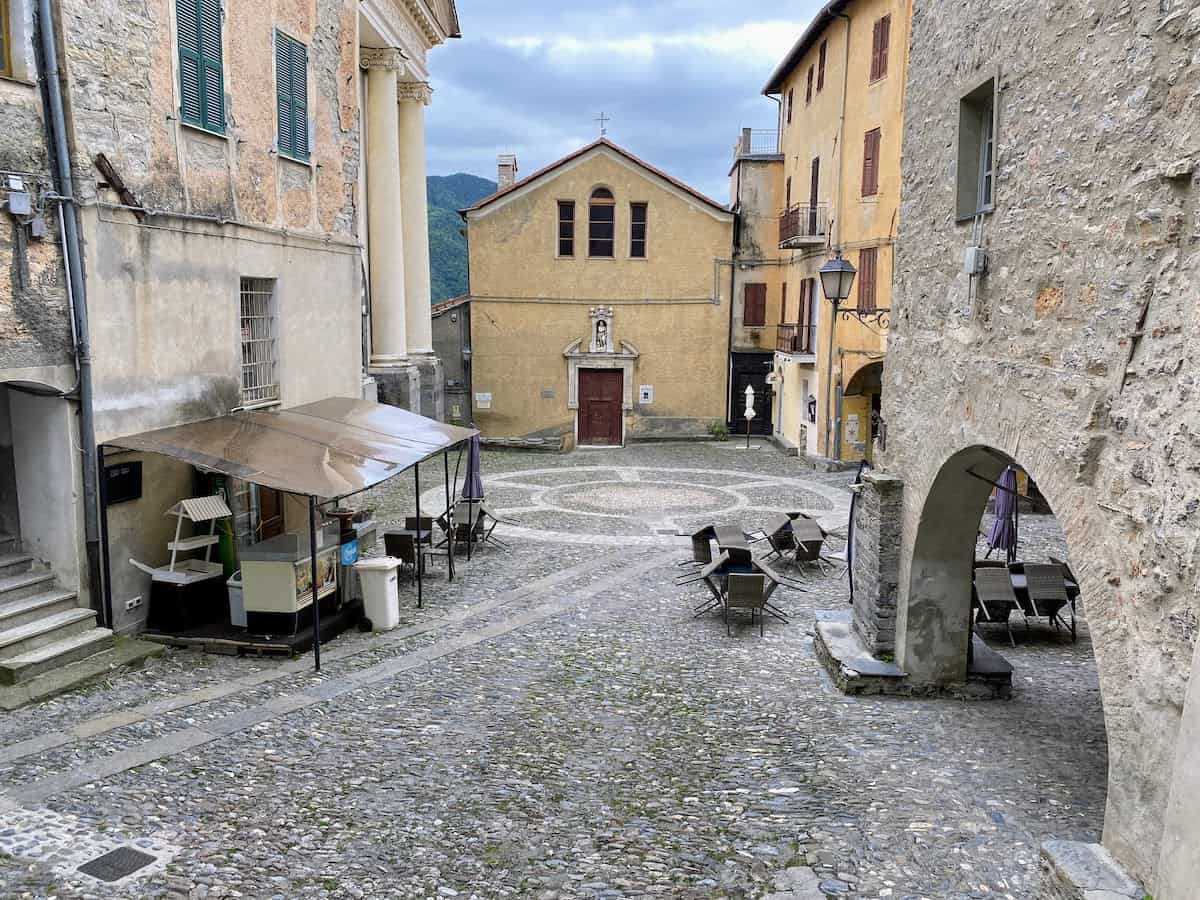
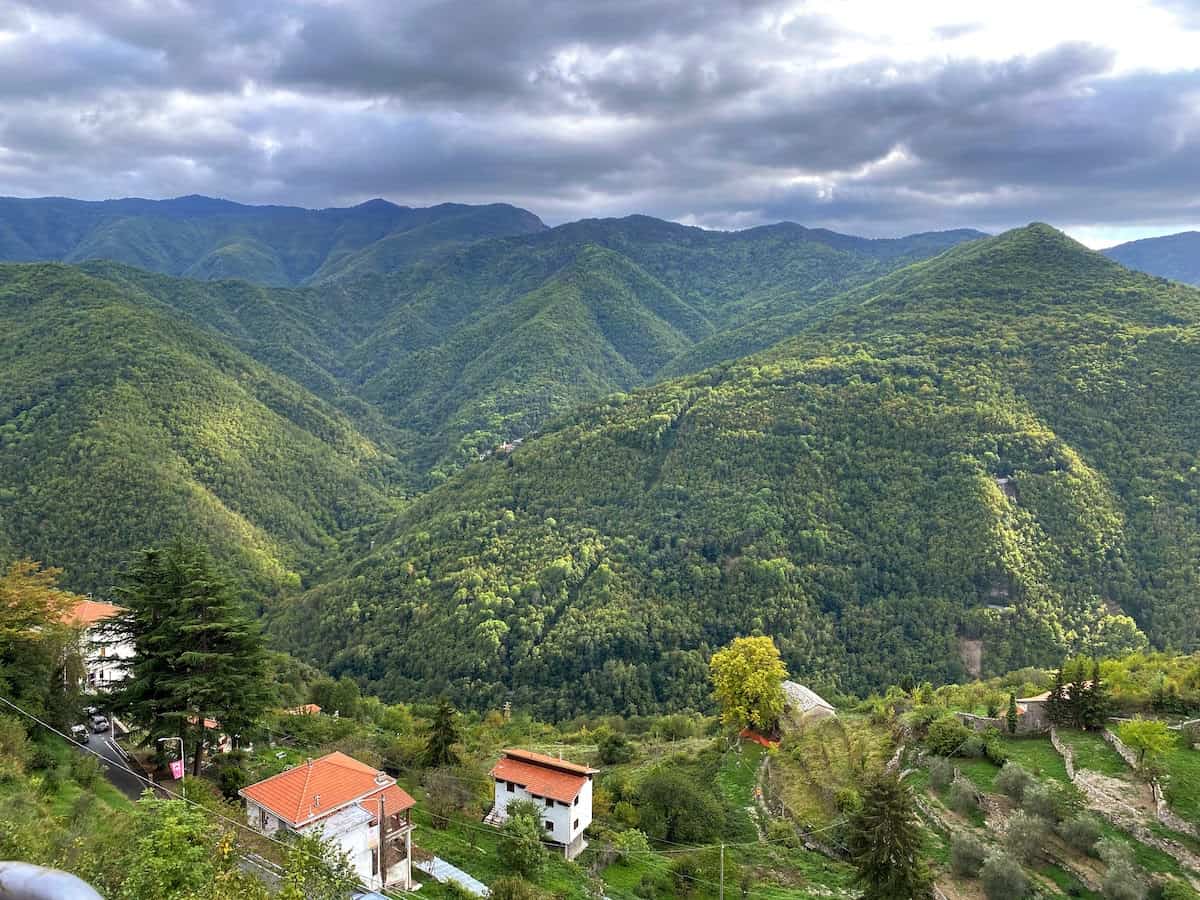
Dolceacqua
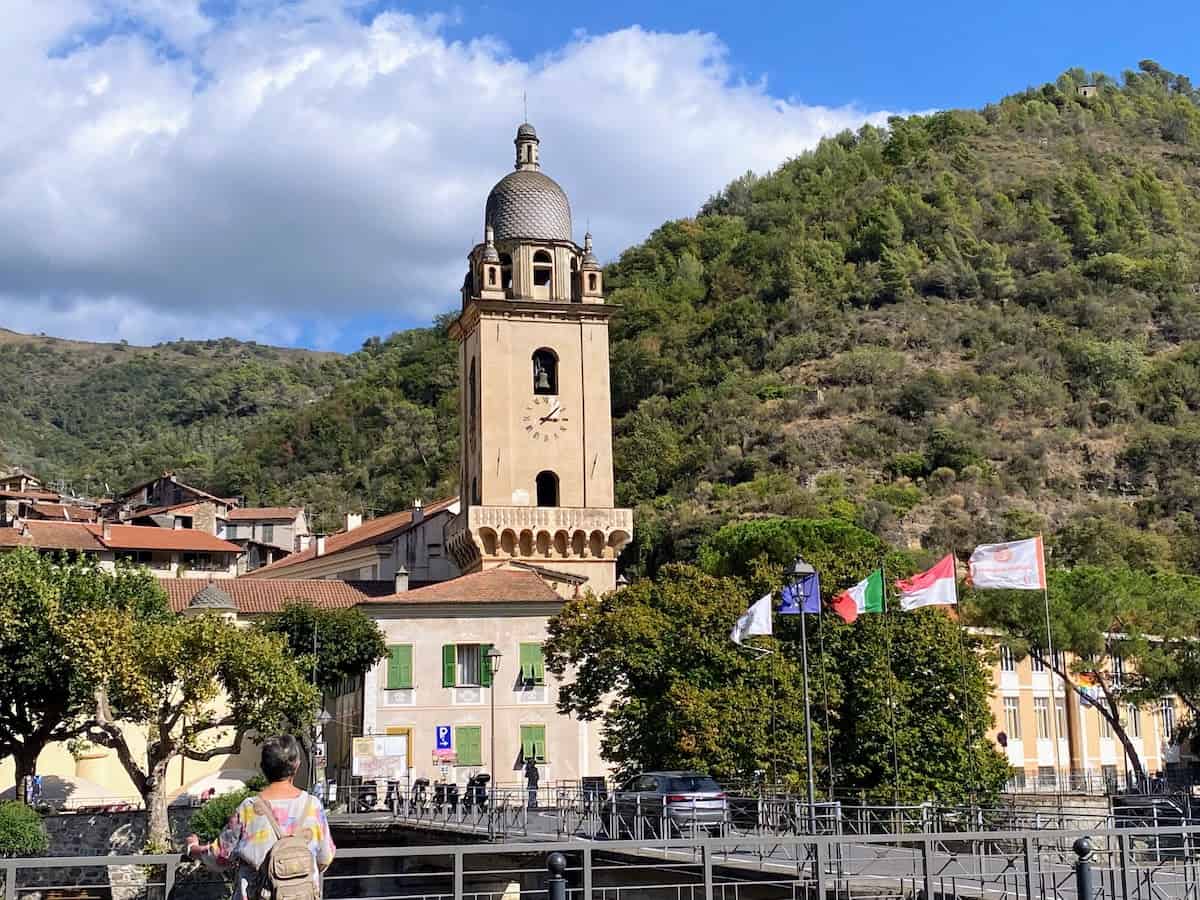
Set in the Nervia Valley, Dolceacqua may be one of the most captivating villages in Liguria. French impressionist Claude Monet thought so, too, painting the old bridge, “Bridge at Dolceacqua.”
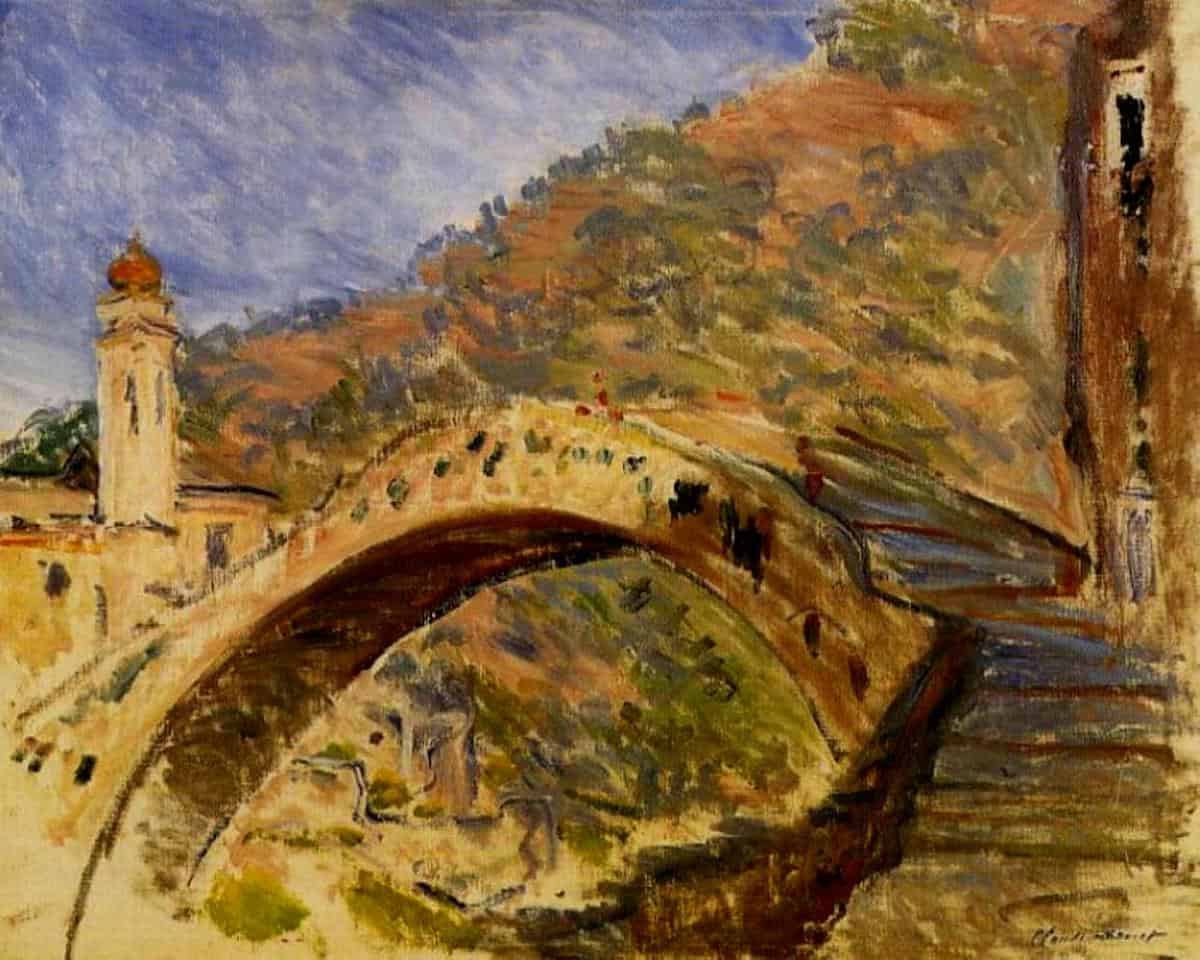
The hilly stone streets in the historic center are narrow and winding, punctuated with arches and piazzas.
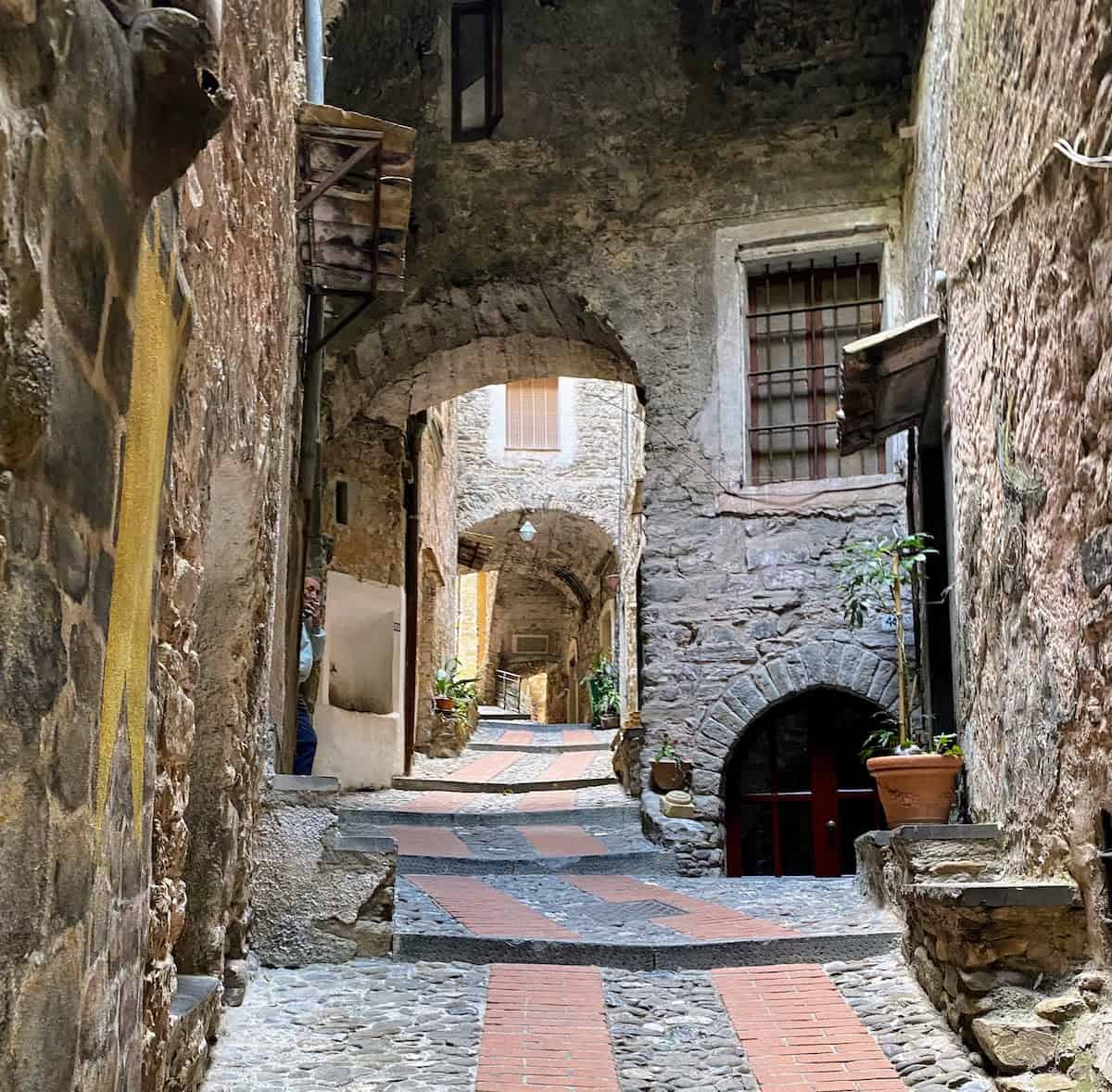
Perched atop the hill is Dolceacqua’s most distinguishing architectural landmark, the Doria Castle (Castello del Doria) which dates back to the 12th century.
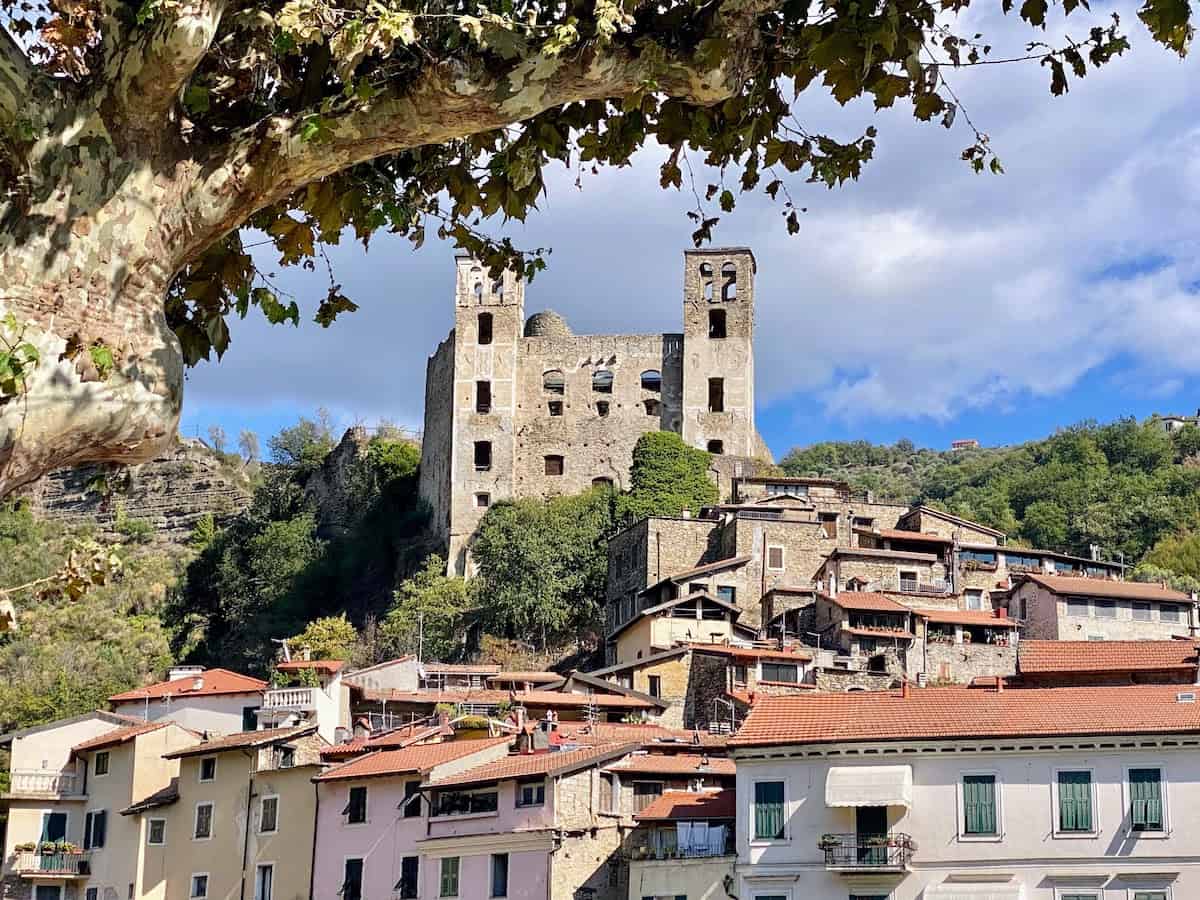
After your climb, make sure to stop at one of the cafes below the old town to sip a glass of Rossesse wine. The local red wine, made from Rosesse grapes, pairs well with pasta and pizza.
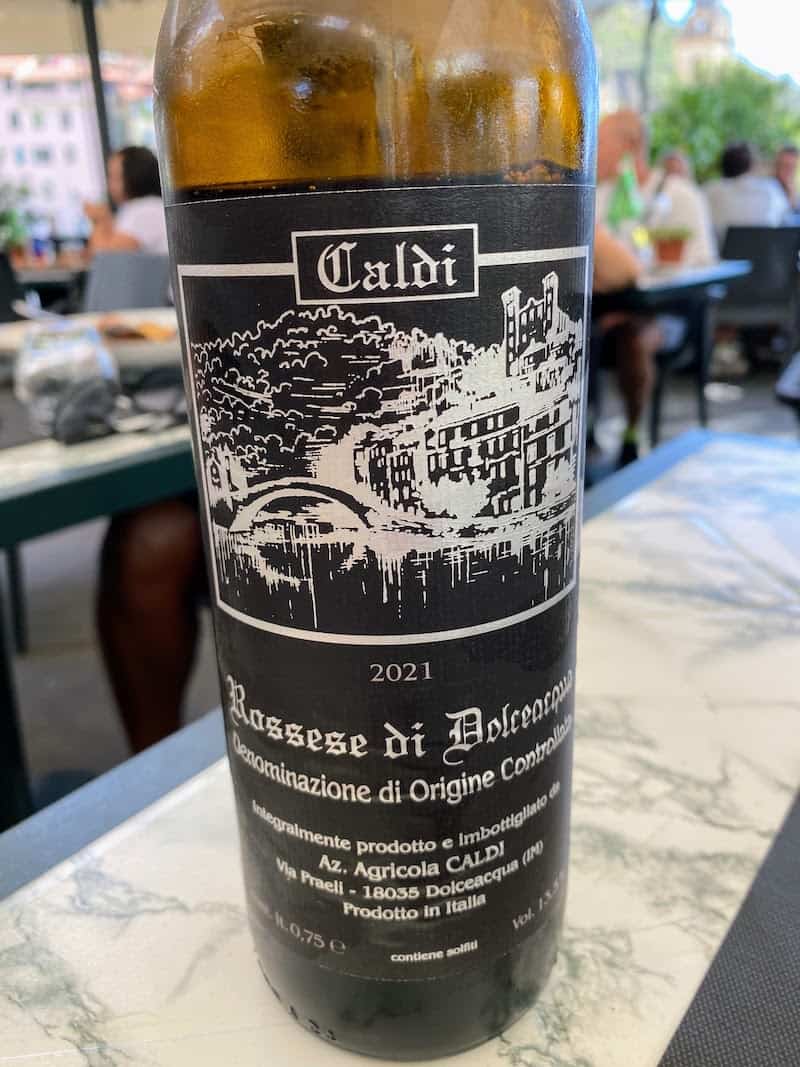
Cervo
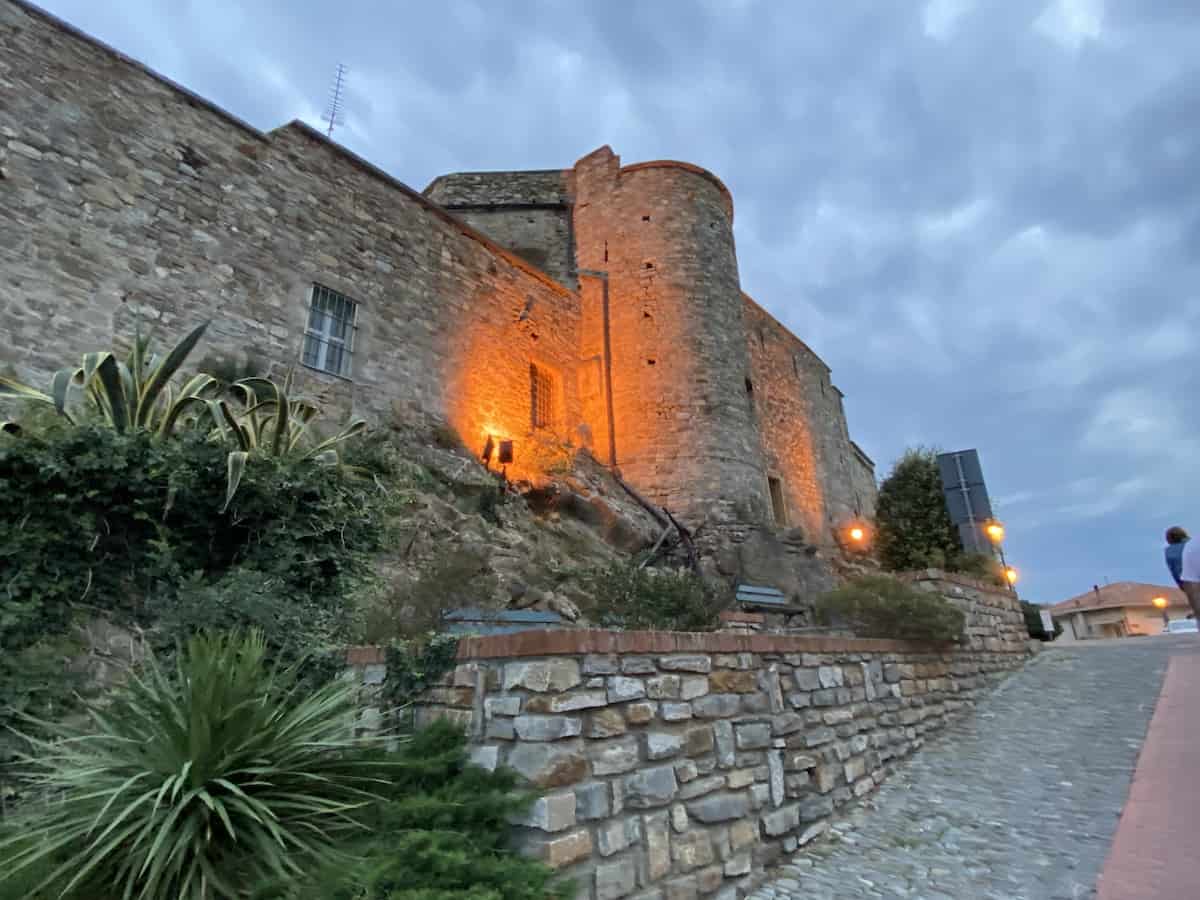
Cervo is another charming ancient hill town in Imperia, home to some 1,200 residents. When you reach the top, you’ll be amazed at the expansive beaches and Mediterranean sea views below.
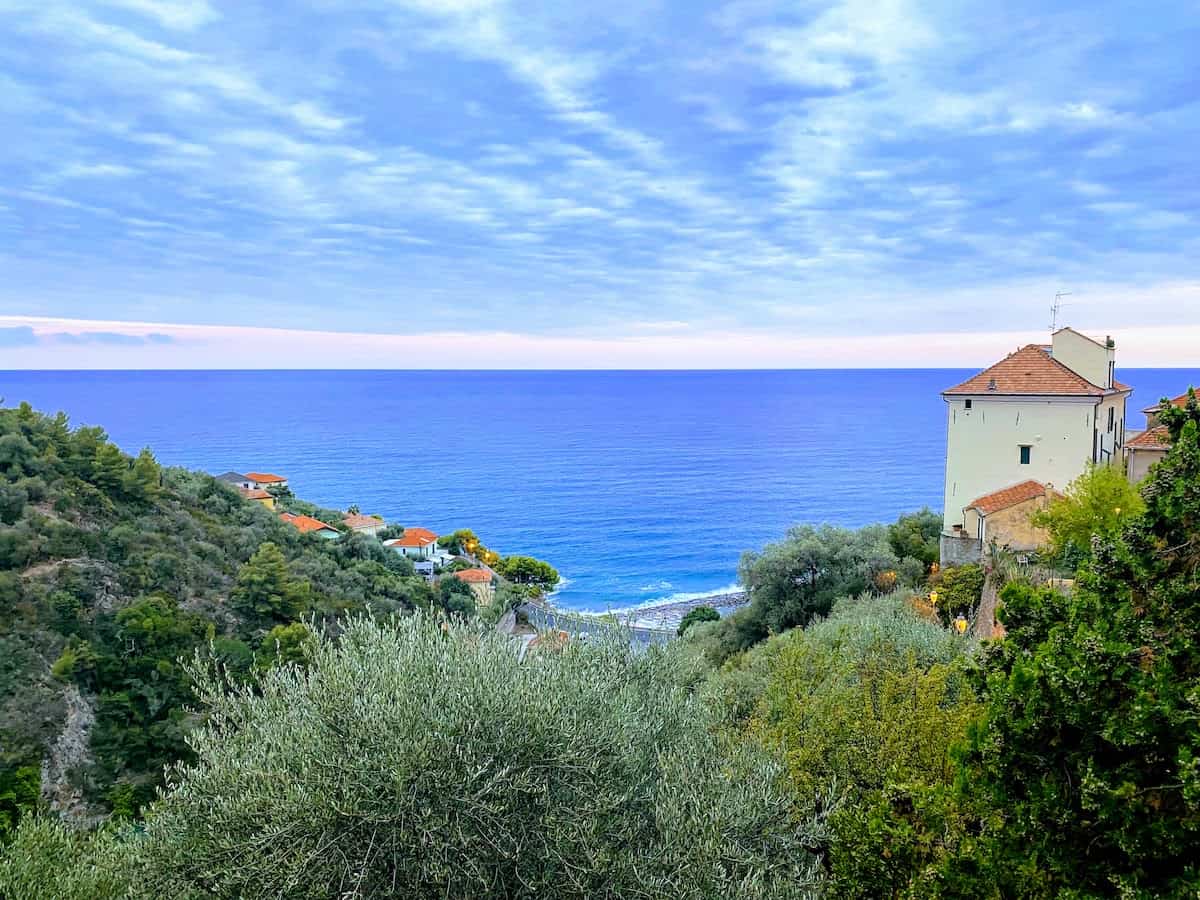
Visitors can explore the narrow streets and enjoy a meal of aperitivo in one of the restaurants, trattorias, or cafes.

Or take a step inside the historic, Baroque-style Church of St. John the Baptist (Chiesa di San Giovanni Battista), where the annual chamber music festival occurs. You’ll see the sixteenth-century stone towers and ramparts that once protected Cervo.
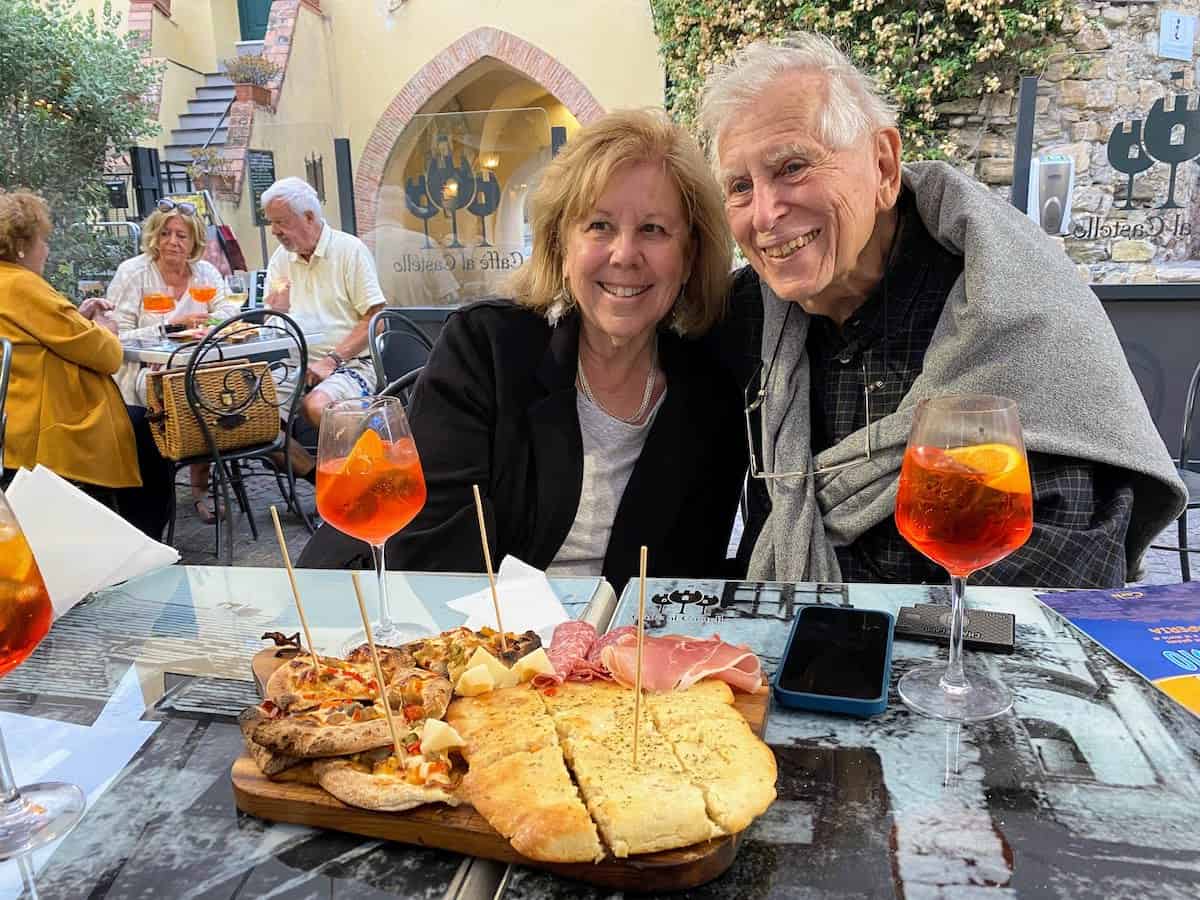
The beautiful village, one of the most beautiful villages in Italy, attracts many artists and artisans.
Poggi
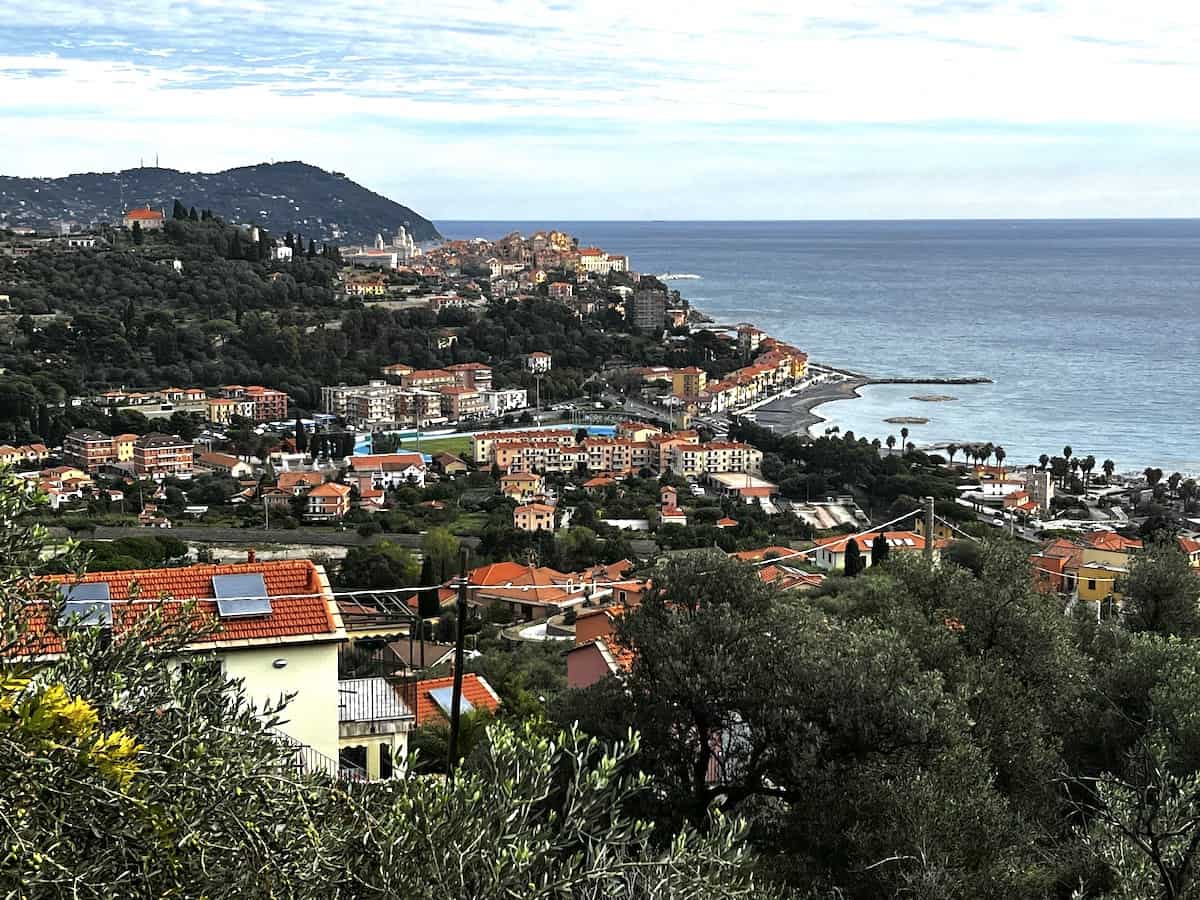
On the sometimes perilous road to Dolcedo, you’ll find the tiny village of Poggi, a place so small that it isn’t even in Wikipedia.
Your car will brush by olive tree branches and rosemary bushes along the side of the road that are close enough to touch.

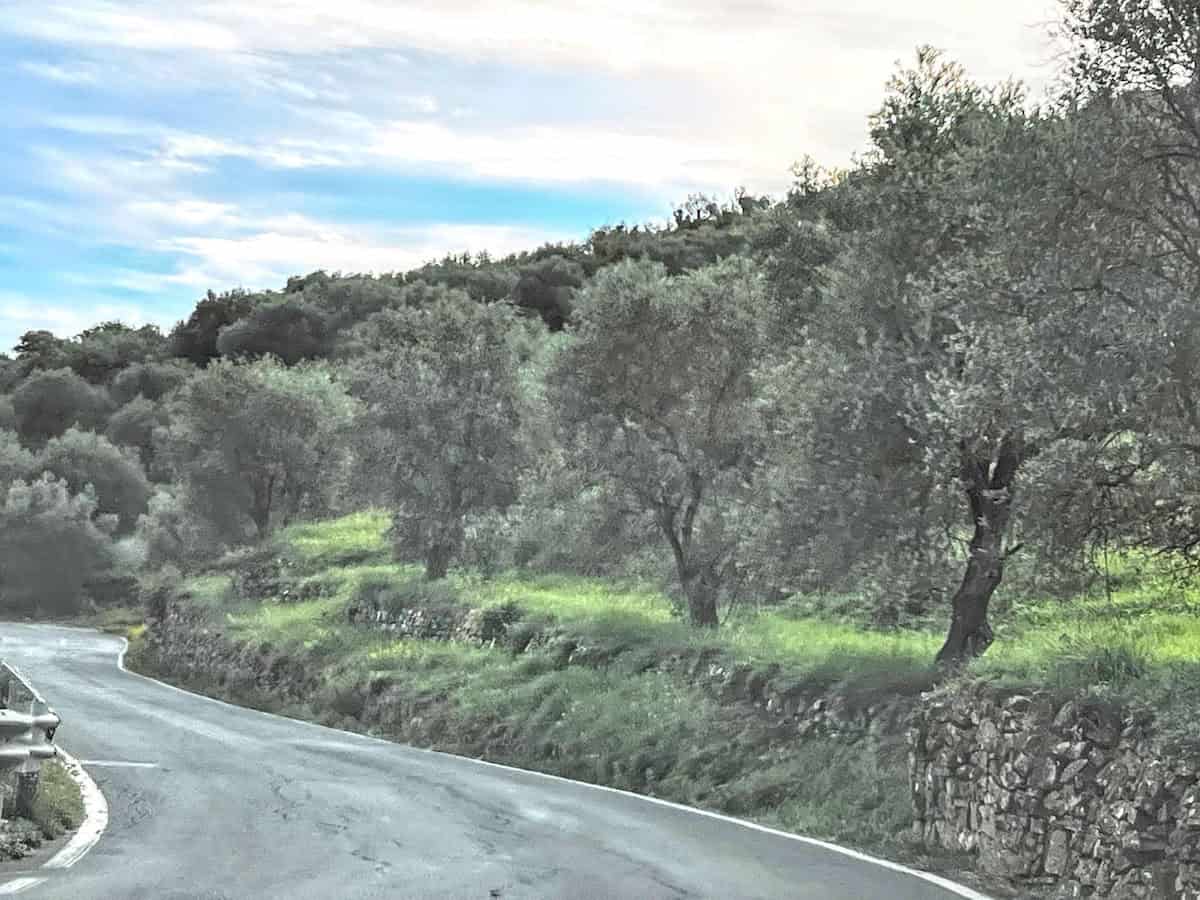
Be sure to (very carefully) pull over to the side of the road because the views of Porto Maurizio from Poggi are outstanding. You may find a few small rental villas and eateries.
All photo credits: Jerome Levine (unless otherwise shown)
Save to Pinterest!!
